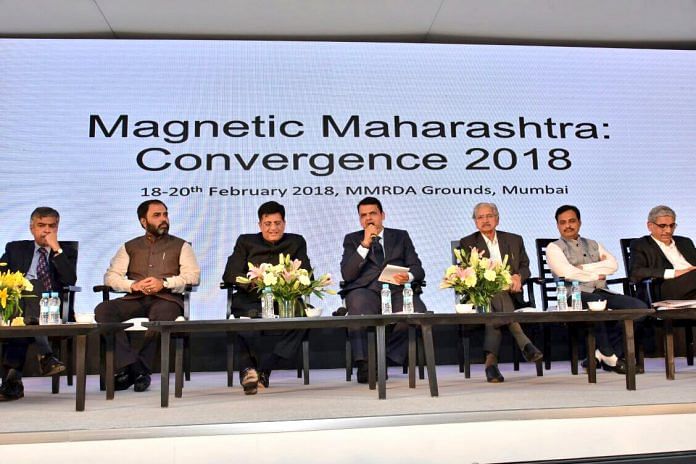The team of seven assistant collectors is trying to get investments into tribal goods and services by pitching them as ‘safe’ and ‘attractive’.
Mumbai: At Maharashtra’s first global investment summit, ‘Magnetic Maharashtra’, seven of the state’s junior-most IAS officers, all posted as assistant collectors in different districts, are busy managing a small stall in the exhibition area and running back-to-back meetings with investors in the makeshift board rooms.
While the state’s top brass talks up Maharashtra’s aspiring trillion-dollar economy to global giants from the tech, auto, textile, finance and other sectors, these seven IAS officers are strongly pitching tribal talent as “safe” and “attractive” investments.
Pavneet Kaur, assistant collector in the tribal district of Palghar, told ThePrint: “This is first time that any state is aggressively pitching investments and partnerships with its tribal population in a global investment seminar like this. Such things are otherwise only seen as soft areas and marked through local festivals and events.”
Kaur added: “Investments and employment opportunities will also help tackle malnutrition, as they will raise income levels of tribal families, and in many cases, put money directly in the hands of the women of the household.”
The young bureaucrats posted in districts such as Palghar, Pune, Nandurbar, Yavatmal, Nanded and Nashik have set up more than 50 meetings with possible investors over the five-day summit.
Incidentally, the Maharashtra government recently signed an agreement with designer Anita Dongre to skill and employ tribal women in a new tailoring unit at Jawhar in Palghar district, where Kaur is posted.
The advantages of tribal self-help groups
Sitting across the table from potential investors, the officials patiently explain what tribal self-help groups are; how, due to peer pressure, their loan defaults rates are low; and how there is potential in the myriad local tribal products, such as black rice or wild honey, or even tribal tourism.
Ayush Prasad, assistant collector and project officer of the Integrated Tribal Development Project, posted in the Pune district, said: “Self-help groups evolve from being consumption-focussed to savings-focussed, to eventually entrepreneurship-focused, but the market linkage is incomplete. We want to establish that link, provide co-branding opportunities.
He added: “We are looking for more business partnerships than corporate social responsibility activities, because that is the only sustainable way.”
Showcasing possibilities
The team of officers decided to take a stall in the ‘Magnetic Maharashtra’ seminar and exhibition last week, and within seven days, with the help of the tribal development department, put together a bouquet of investment and partnership possibilities to showcase.
The pitches include establishing a market for the tribal community’s goods and services by retailing or exporting them, or even setting up call centres to market products of self-help groups.
The tribal development department promises to provide investors access to good quality products and services—many of which are protected by the ‘Geographical Indication’ tag—at competitive prices, and facilitate direct contracts with artisans, craftsmen and self-help groups.
The team is also marketing tribal manufacturing groups as “stable investments” with a high rate of return due to the ample demand and the untapped market, and tribal villages as tourism resorts. The tribal development department says it will facilitate agreements with small tribal villages in well-connected, picturesque locations, where companies could spruce up the place in sync with the prevalent tribal culture and rent portions of each home.
Besides, the officials are also marketing the tribal population as a resource pool for employment in various skilled and unskilled sectors, while also encouraging large companies to adopt tribal schools, anganwadis, central kitchens and primary healthcare centres as part of their corporate social responsibility activities.
About 30 per cent of the interest that has come the officers’ way so far has been for these CSR-type activities.






